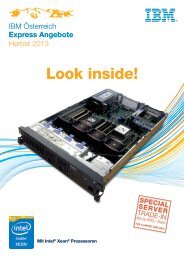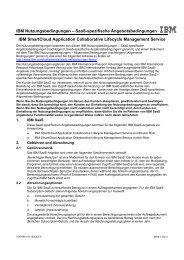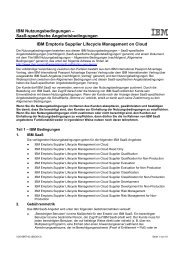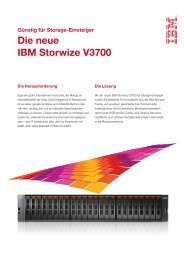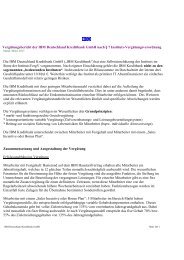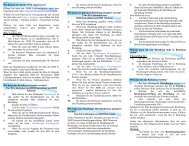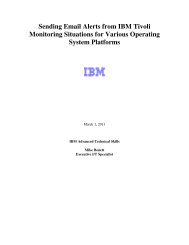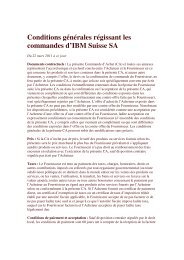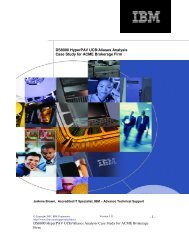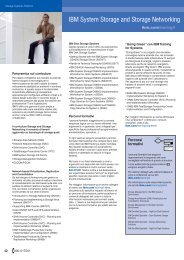FICON Express2 Channel Performance Version 1.0 - IBM
FICON Express2 Channel Performance Version 1.0 - IBM
FICON Express2 Channel Performance Version 1.0 - IBM
Create successful ePaper yourself
Turn your PDF publications into a flip-book with our unique Google optimized e-Paper software.
<strong>FICON</strong> <strong>Express2</strong> <strong>Channel</strong> <strong>Performance</strong> <strong>Version</strong> <strong>1.0</strong><br />
Page 34<br />
Each time a SAP encounters a busy and has to retry another path for a SSCH, additional SAP<br />
cycles are consumed and the %IOP busy or SAP utilization will increase. One of the benefits<br />
of native <strong>FICON</strong> is that it makes SAPs or IOPs more productive due to the reduction in<br />
busies or RETRIES/SSCH. For the same activity rate, one should see less IOP utilization %<br />
busy with native <strong>FICON</strong>, <strong>FICON</strong> Express and <strong>FICON</strong> <strong>Express2</strong> channels than with ESCON<br />
channels. One must be careful not to misinterpret IOP utilization %’s however. High IOP<br />
utilization %’s are usually an indicator of contention especially with ESCON channels,<br />
directors and control units. Adding additional IOPs will NOT help reduce channel<br />
configuration contention. One must identify the source of the configuration contention and<br />
fix it. Migrating from ESCON to native <strong>FICON</strong> configurations is a natural solution to this<br />
problem. Figures 27 and 28 represent a dramatic example of this. Figure 27 is from a z900<br />
ESCON configuration with a lot of contention. Specifically, for the time interval reported,<br />
there were a total of 4.73 retries per SSCH. 4.19 of these were channel path busies. This<br />
means that when the SAP tried to start a new I/O operation on an ESCON channel, that<br />
channel was already busy processing another I/O and the SAP had to try to find another<br />
ESCON channel path that was available for this I/O and on the average it did this 4.19 times<br />
per SSCH. This means that either the ESCON channels were operating at high utilizations or<br />
there were not enough paths per LCU defined to handle the number of I/O operations that<br />
were being issued simultaneously to the total number of LCU’s that shared the same set of<br />
ESCON paths. This can happen when there is a burst of activity during a subset of the total<br />
RMF interval, e.g. for a few minutes out of a 30 minute or longer interval. There was also an<br />
average of 0.54 director port busies per SSCH during this time interval. This means that 2 or<br />
more ESCON channel paths most likely from multiple CECs in the same sysplex were trying<br />
to connect to the same director port and control unit port at the same time and with ESCON<br />
only 1 I/O operation to a given director port or CU port can be active at once. The other<br />
I/O’s that attempt to use the same destination port will get DP busy signals. The rules of<br />
thumb available for these statistics are:<br />
1. keep SAP utilization or %IOP BUSY below 70%,<br />
2. AVG Q LNGTH should be less than 1 and<br />
3. Total RETRIES/SSCH should be less than 2 with the sum of DP, CU and DV busies per<br />
SSCH less than 1.


